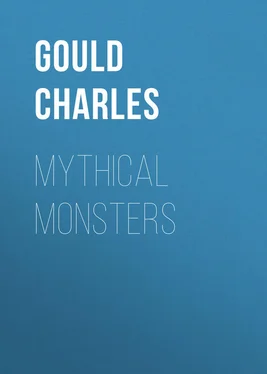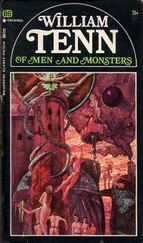Charles Gould - Mythical Monsters
Здесь есть возможность читать онлайн «Charles Gould - Mythical Monsters» — ознакомительный отрывок электронной книги совершенно бесплатно, а после прочтения отрывка купить полную версию. В некоторых случаях можно слушать аудио, скачать через торрент в формате fb2 и присутствует краткое содержание. Жанр: Мифы. Легенды. Эпос, Природа и животные, foreign_antique, foreign_prose, на английском языке. Описание произведения, (предисловие) а так же отзывы посетителей доступны на портале библиотеки ЛибКат.
- Название:Mythical Monsters
- Автор:
- Жанр:
- Год:неизвестен
- ISBN:нет данных
- Рейтинг книги:5 / 5. Голосов: 1
-
Избранное:Добавить в избранное
- Отзывы:
-
Ваша оценка:
- 100
- 1
- 2
- 3
- 4
- 5
Mythical Monsters: краткое содержание, описание и аннотация
Предлагаем к чтению аннотацию, описание, краткое содержание или предисловие (зависит от того, что написал сам автор книги «Mythical Monsters»). Если вы не нашли необходимую информацию о книге — напишите в комментариях, мы постараемся отыскать её.
Mythical Monsters — читать онлайн ознакомительный отрывок
Ниже представлен текст книги, разбитый по страницам. Система сохранения места последней прочитанной страницы, позволяет с удобством читать онлайн бесплатно книгу «Mythical Monsters», без необходимости каждый раз заново искать на чём Вы остановились. Поставьте закладку, и сможете в любой момент перейти на страницу, на которой закончили чтение.
Интервал:
Закладка:
Notice, also, the high condition of civilization possessed by the Chinese four thousand years ago, their enlightened and humane polity, their engineering works, 86their provision for the proper administration of different departments of the State, and their clear and intelligent documents. 87
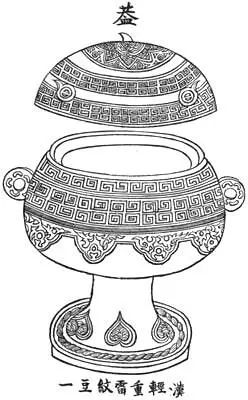
Fig. 23. – Vase. Han Dynasty,
B.C. 206 to A.D. 23.
( From the Poh Ku T’u. )
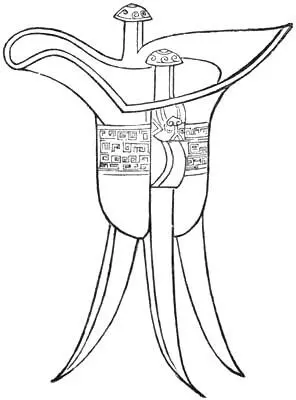
Fig. 24. – Cyathus or Cup for Libations.Shang Dynasty, B.C. 1766 to B.C. 1122.
( From the Poh Ku T’u. )
In looking back upon these, I think we can hardly distinguish any such deficiency of intellect, in comparison with ours, on the part of these our historical predecessors as to indicate so rapid a change of intelligence as would, if we were able to carry our comparison back for another similar period, inevitably land us among a lot of savages similar to those who fringe the civilization of the present period. Intellectually measured, the civilized men of eight or ten thousand years ago must, I think, have been but little inferior to ourselves, and we should have to peer very far back indeed before we reached a status or condition in which the highest type of humanity was the congener of the cave lion, disputing with him a miserable existence, shielded only from the elements by an overhanging rock, or the fortuitous discovery of some convenient cavern.
If this be so, we are forced back again to the consideration of the questions with which this section opened; where are the evidences of man’s early intellectual superiority? are they limited to those deduced from the discovery of certain stone implements of the early rude, and later polished ages? and, if so, can we offer any feasible explanation either of their non-existence or disappearance?
In the first place, it may be considered as admitted by archæologists that no exact line can be drawn between the later of the two stone-weapon epochs, the polished Neolithic stone epoch, and the succeeding age of bronze. They are agreed that these overlap each other, and that the rude hunters, who contented themselves with stone implements of war and the chase, were coeval with people existing in other places, acquainted with the metallurgical art, and therefore of a high order of intelligence. The former are, in fact, brought within the limit of historic times.
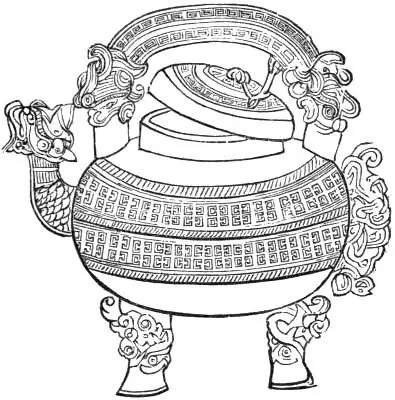
Fig. 25. – Incense Burner(?).Chen Dynasty, B.C. 1122 to B.C. 255.
( From the Poh Ku T’u. )
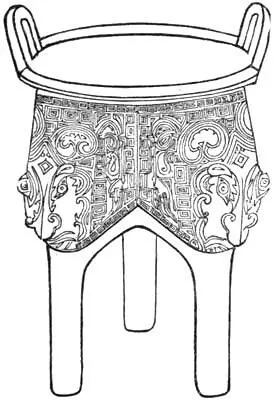
Fig. 26. – Tripod of the Shang Dynasty.
Probable date , B.C. 1649.
( From the Poh Ku T’u. )
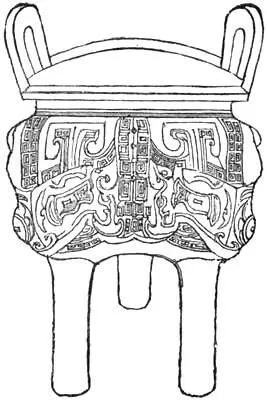
Fig. 27. – Tripod of Fu Yih,Shang Dynasty.
( From the Poh Ku T’u. )
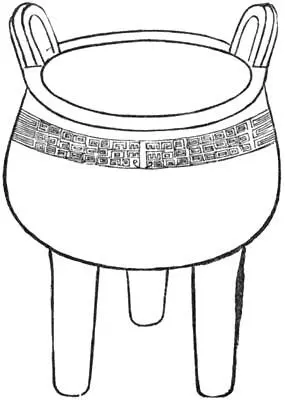
Fig. 28. – Tripod of Kwai Wan,Chen Dynasty, B.C. 1122 to B.C. 255
( From the Poh Ku T’u. )
A similar inference might not unfairly be drawn with regard to those numerous discoveries of proofs of the existence of ruder man, at still earlier periods. The flint-headed arrow of the North American Indian, and the stone hatchet of the Australian black-fellow exist to the present day; and but a century or two back, would have been the sole representatives of the constructive intelligence of humanity over nearly one half the inhabited surface of the world. No philosopher, with these alone to reason on, could have imagined the settled existence, busy industry, and superior intelligence which animated the other half; and a parallel suggestive argument may be supported by the discovery of human relics, implements, and artistic delineations such as those of the hairy mammoth or the cave-bear. These may possibly be the traces of an outlying savage who co-existed with a far more highly-organized people elsewhere, 88just as at the present day the Esquimaux, who are by some geologists considered as the descendants of Palæolithic man, co-exist with ourselves. They, like their reputed ancestors, have great ability in carving on bone, &c.; and as an example of their capacity not only to conceive in their own minds a correct notion of the relative bearings of localities, but also to impart the idea lucidly to others, I annex a wood-cut of a chart drawn by them, impromptu, at the request of Sir J. Ross, who, inferentially, vouches for its accuracy.
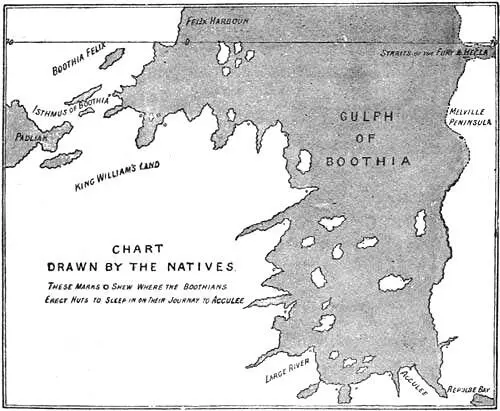
Fig. 29. ( From Sir John Ross’ Second Voyage to the Arctic Regions. )
There is but a little step between carving the figure of a mammoth or horse, and using them as symbols. Multiply them, and you have the early hieroglyphic written language of the Chinese and Egyptians. It is not an unfair presumption that at no great distance, in time or space, either some generations later among his own descendants, or so many nations’ distance among his coevals, the initiative faculty of the Palæolithic savage was usefully applied to the communication of ideas, just as at a much later date the Kououen symbolic language was developed or made use of among the early Chinese. 89
Such is, necessarily, the first stage of any written language, and it may, as I think, perhaps have occurred, been developed into higher stages, culminated, and perished at many successive epochs during man’s existence, presuming it to have been so extended as the progress of geology tends to affirm.
May not the meandering of the tide of civilization westward during the last three thousand years, bearing on its crest fortune and empire, and leaving in its hollow decay and oblivion, possibly be the sequel of many successive waves which have preceded it in the past, rising, some higher, some lower, as waves will.
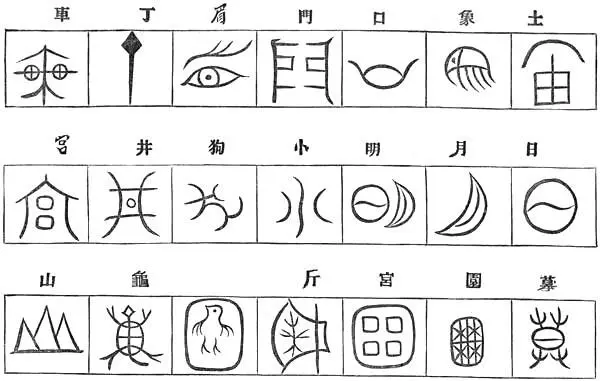
Fig. 30. – Early Chinese Hieroglyphics.
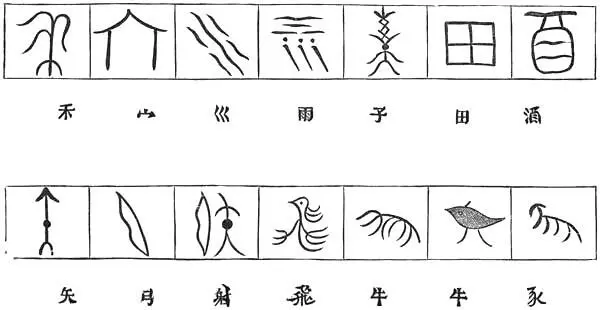
Fig. 31. – Early Chinese Hieroglyphics.
In comparison with the vast epochs of which we treat how near to us are Nineveh, Babylon, and Carthage! Yet the very sites of the former two have become uncertain, and of the last we only know by the presence of the few scattered ruins on the shores of the Mediterranean Sea. Tyre, the vast entrepôt of commerce in the days of Solomon, was stated, rightly or wrongly, by Benjamin of Tudela, to be but barely discernible (in 1173) in ruins beneath the waves; and the glory of the world, the temple of King Solomon, was represented at the same date by two copper columns which had been carried off and preserved in Rome. It is needless to quote the cases of Persia, Greece, and Rome, and of many once famous cities, which have dissolved in ruin; except as assisting to point the moral that conquest, which is always recurring, means to a great extent obliteration, the victor having no sympathy with the preservation of the time-honoured relics of the vanquished.
Читать дальшеИнтервал:
Закладка:
Похожие книги на «Mythical Monsters»
Представляем Вашему вниманию похожие книги на «Mythical Monsters» списком для выбора. Мы отобрали схожую по названию и смыслу литературу в надежде предоставить читателям больше вариантов отыскать новые, интересные, ещё непрочитанные произведения.
Обсуждение, отзывы о книге «Mythical Monsters» и просто собственные мнения читателей. Оставьте ваши комментарии, напишите, что Вы думаете о произведении, его смысле или главных героях. Укажите что конкретно понравилось, а что нет, и почему Вы так считаете.
